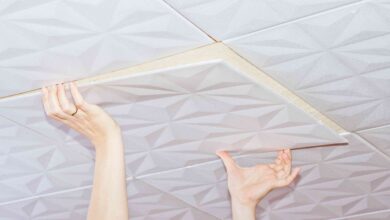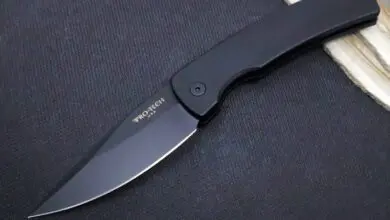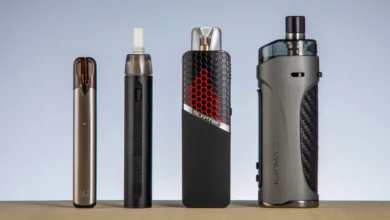Outdoor Furniture Materials: Tips for Choosing and Combining the Right Ones
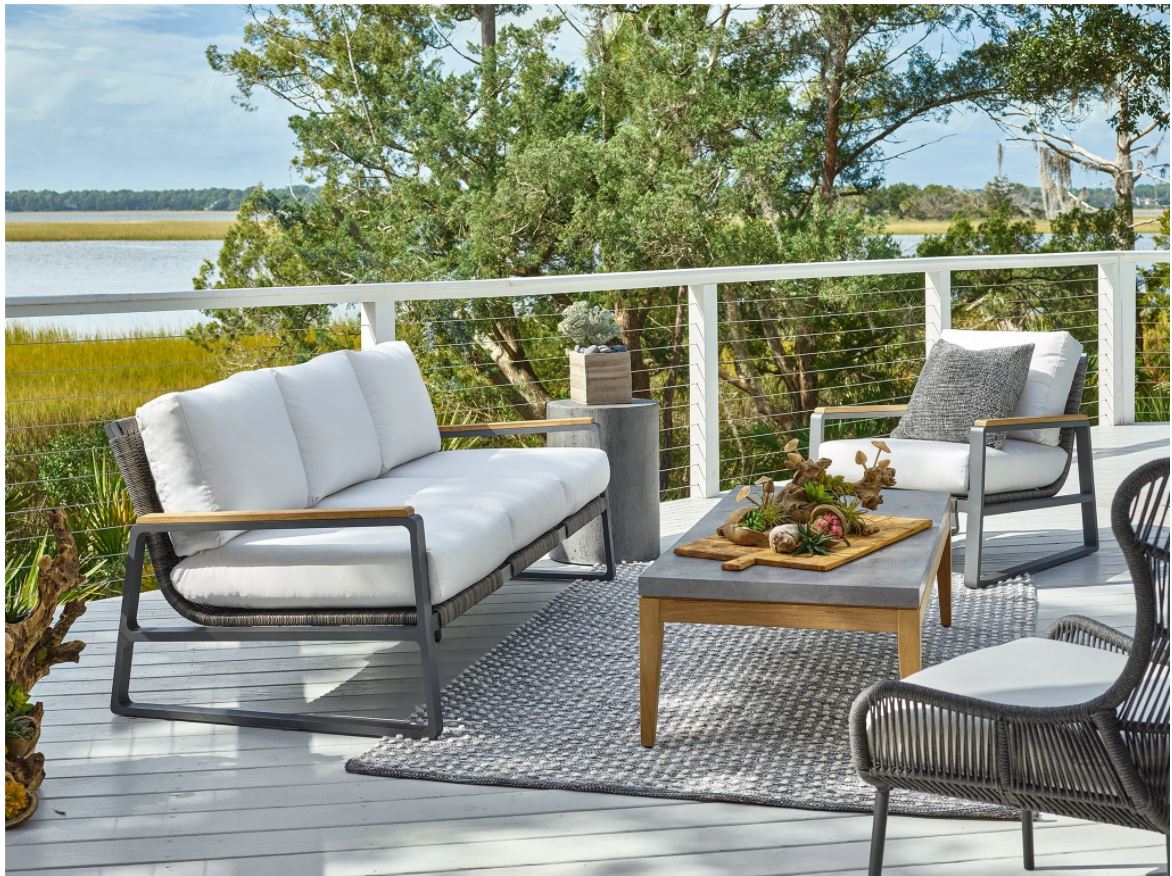
When it comes to furnishing your outdoor living space, selecting the right materials for your furniture is crucial. Outdoor furniture needs to withstand various weather conditions, resist damage from UV rays, and provide comfort and style. With a plethora of options available, it can be overwhelming to determine which materials are the best fit for your needs.
Metal: Durability and Modern Appeal
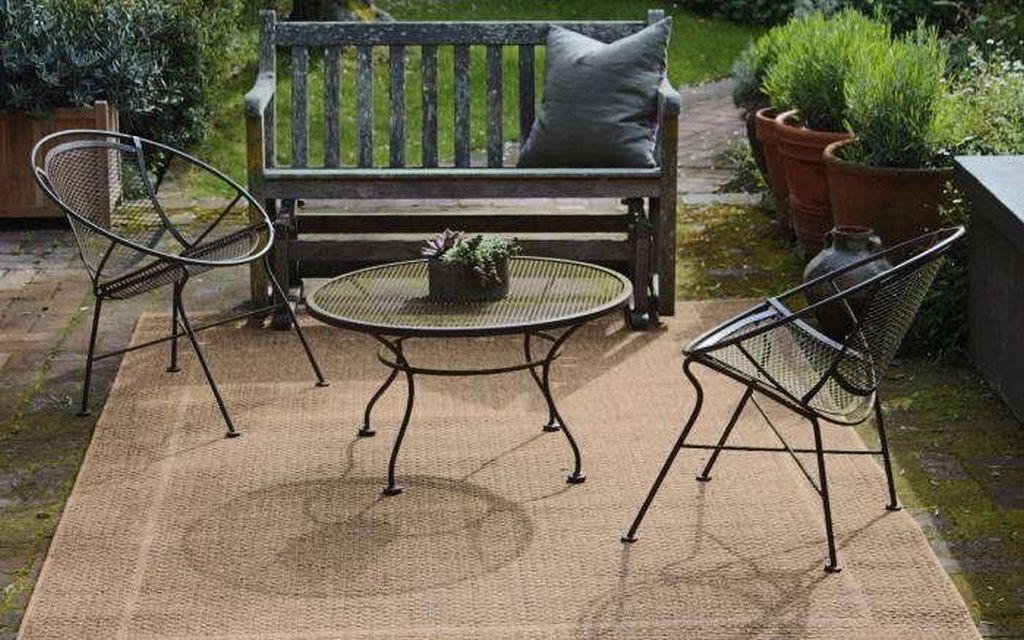
Metal outdoor furniture, such as black outdoor dining chairs, brings a contemporary and sleek touch to outdoor spaces. Metals like aluminum, wrought iron, and stainless steel are popular choices due to their durability and resistance to rust and corrosion. Aluminum furniture is lightweight, making it easy to move around, and it requires minimal maintenance. It is also naturally resistant to rust, which makes it a great option for coastal areas.
Wrought iron, known for its strength and ornate designs, adds a touch of elegance to exterior settings. However, it requires more maintenance to prevent rust and corrosion. Regular cleaning and applying a protective finish can help maintain its appearance and extend its lifespan.
Stainless steel is another excellent choice for outside furniture due to its strength and resistance to rust and staining. It offers a sleek and modern look and is relatively low maintenance. However, it can get hot under direct sunlight, so adding cushions or opting for designs with built-in shade can enhance comfort.
Wood: A Classic and Versatile Choice
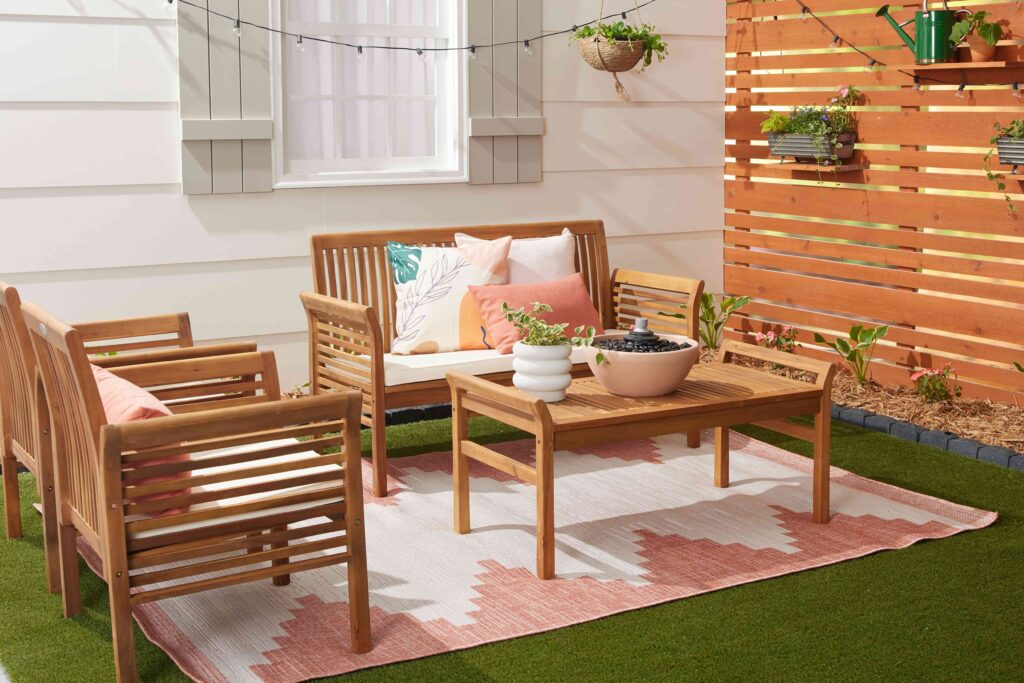
Wood has long been a favored material for outdoor furniture due to its timeless appeal and versatility. With its natural beauty and warm tones, wood furniture can enhance the aesthetics of any outdoor setting. The choice of wood is important, as different types offer varying degrees of durability and resistance to weathering.
Teak, for example, is a popular hardwood known for its strength and resistance to decay and insects. It has natural oils that protect it from moisture, making it an excellent choice for outdoor furniture.
Cedar is another durable wood that is naturally resistant to rot and decay. It also has a pleasant aroma and is often used in outdoor furniture that requires frequent contact with moisture, such as saunas or poolside loungers.
Eucalyptus, a fast-growing hardwood, is another option that offers good durability and a similar appearance to teak at a more affordable price point. Regular maintenance, such as applying protective sealants or stains, can help prolong the life of wooden outdoor furniture.
Wicker and Rattan: Natural Charm and Flexibility
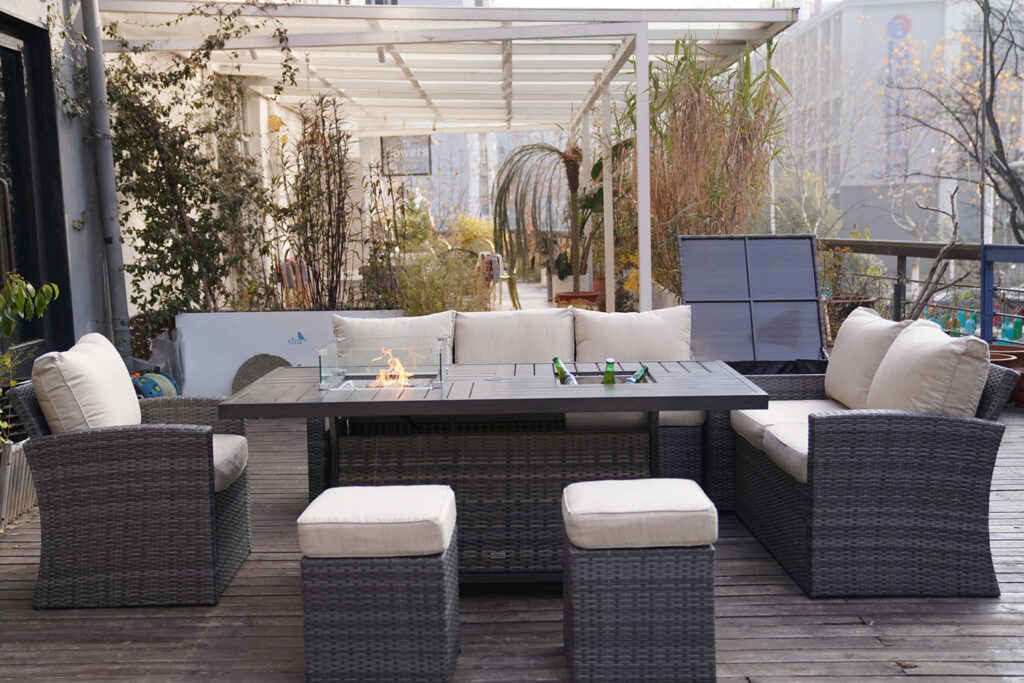
For those seeking a natural and charming aesthetic, wicker and rattan outdoor furniture are ideal choices. Wicker refers to the weaving technique, while rattan refers to the natural material used. These furniture pieces are often handcrafted from natural fibers such as rattan, bamboo, or seagrass. Wicker and rattan furniture are lightweight, making them easy to move around and rearrange. They also provide flexibility in terms of design, as the weaving technique allows for intricate patterns and shapes.
However, it’s important to note that wicker and rattan furniture are more suitable for covered or partially covered outdoor spaces, as prolonged exposure to rain or intense sunlight can cause them to deteriorate. Regular cleaning and occasional reapplication of protective coatings can help prolong their lifespan and maintain their appearance.
Plastic and Resin: Affordable and Low Maintenance Options
Plastic and resin outdoor furniture offer affordable and low-maintenance options for those on a budget or looking for hassle-free upkeep. These materials are lightweight, making them easy to move and store. They are also resistant to fading, cracking, and moisture damage. Plastic furniture is available in various colors and designs, allowing for versatility in matching your outdoor decor. Resin furniture, often designed to resemble natural materials like wood or wicker, offers a more refined look while maintaining the benefits of plastic.
Both plastic and resin furniture can be easily cleaned with soap and water, making them perfect choices for busy households or commercial spaces that require frequent cleaning. It’s important to note that extreme heat or prolonged exposure to sunlight can cause plastic and resin furniture to warp or fade, so it’s advisable to provide shade or store them during harsh weather conditions.
Cushions and Upholstery: Selecting Weather-Resistant Fabrics
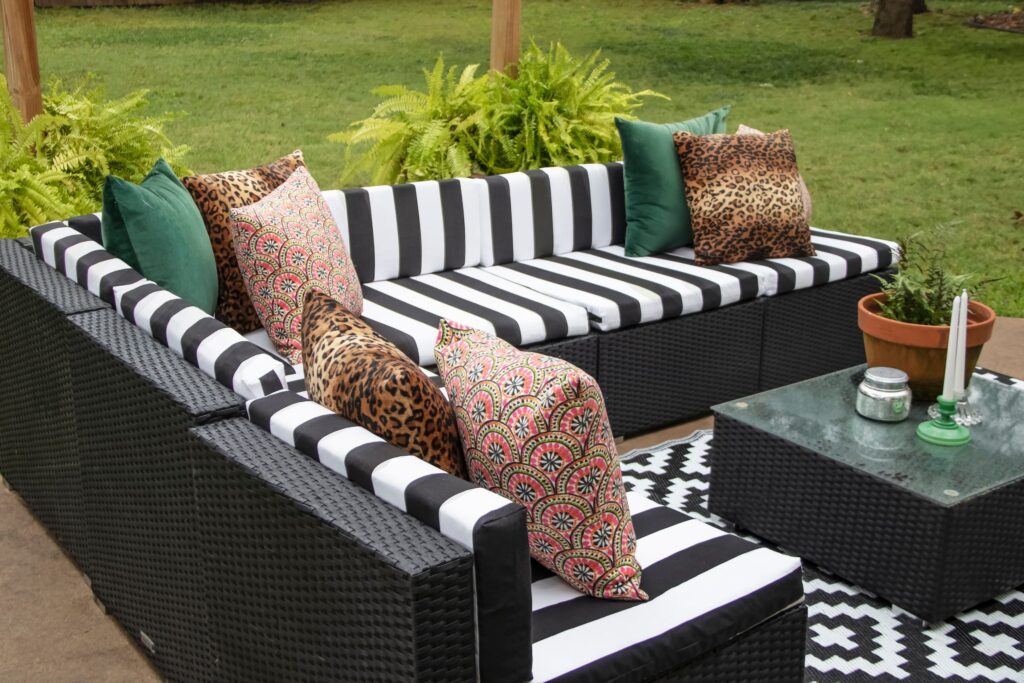
In addition to the furniture frame, choosing the right fabrics for cushions and upholstery is essential to ensure both comfort and durability. Outdoor fabrics need to be able to withstand the elements, including UV rays, rain, and moisture. Look for fabrics that are specifically designed for outdoor use and are fade-resistant, water-repellent, and mildew-resistant.
Solution-dyed acrylic fabrics are popular choices due to their excellent performance in outdoor environments. These fabrics are colorfast, meaning they won’t fade easily, even with prolonged exposure to sunlight. They are also water-repellent and resistant to mildew, making them easy to clean and maintain.
Another option is the polyester fabric with a UV-resistant coating. While it may not be as durable as solution-dyed acrylic, it offers a more budget-friendly choice with a wide range of colors and patterns. Whichever fabric you choose, it’s important to properly care for the cushions and upholstery by cleaning them regularly and storing them during harsh weather conditions to ensure their longevity.
Combining Materials for Style and Functionality
To create a visually appealing and functional outdoor space, consider combining different materials in your furniture choices. Mixing materials can add texture, contrast, and interest to your outdoor setting. For example, you can pair a wooden dining table with metal chairs for a contemporary twist or combine wicker and aluminum furniture for a balanced and eclectic look.
When combining materials, it’s important to ensure that they complement each other in terms of style, color, and functionality. Consider the overall design aesthetic of your outdoor space and select materials that enhance and harmonize with the existing elements. Additionally, pay attention to the practical aspects such as maintenance requirements and how well the materials can withstand the specific weather conditions in your area.
Conclusion
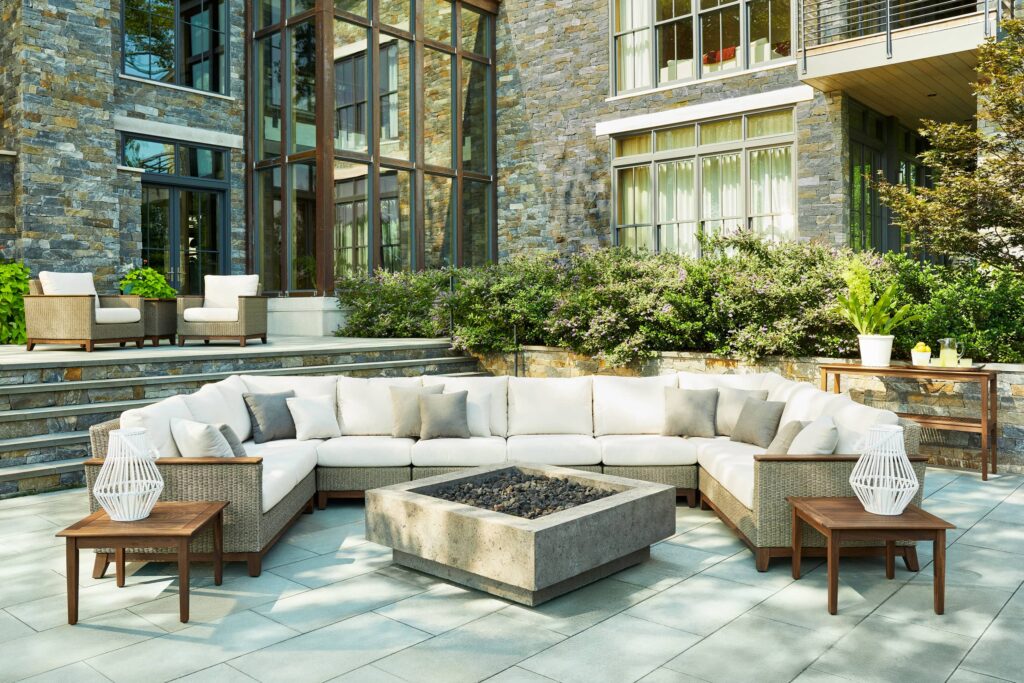
Outdoor furniture materials are an important part of any outdoor space. Whether you’re looking to create a modern oasis or a more traditional garden area, there is something for everyone. With so many options available, it can be challenging to decide which one is right for you and your outdoor space. But by following our tips on choosing and combining the right materials, we hope that you have gained some insight into the process and now feel confident in making your selection. Good luck!

